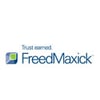
Employee Benefit Plan Team
Boosting retirement benefits will attract and retain talent
A staggering 55% of working Americans report that they’re behind in their retirement savings, with 2 in 5 Americans admitting to not saving at all.
Lack of employer-sponsored retirement plans and low employee participation have prompted Congress to step in, most recently establishing The Securing a Strong Retirement Act of 2022 (‘SECURE 2.0’ or ‘The Act’). Passed into law in December 2022, SECURE 2.0 builds on The Setting Every Community Up for Retirement Enhancement Act of 2019 (‘SECURE Act’), which established safe-harbor retirement plans that are less expensive and smoother to manage.
By Way of Background: The Need for Small Business Benefit Plans
A generally accepted rule of thumb is that workers need to save at least between 10% and 15% of income in a tax-advantaged retirement account. Yet at the end of 2022, approximately 64% of U.S. consumers said they were living paycheck to paycheck. Just as astonishing is that of those earning more than six figures, 47% report living paycheck to paycheck.
While many workers are just trying to make ends meet, most cite the fact that wage growth is stagnant, so they are not making enough to live and save, or they are unemployed, and/or don’t qualify to participate. Contributing to the shortfall is the need to pay off burdensome debt, such as student loan, automobile, and credit card, with total debt exceeding 18.5% over last year alone, according to TransUnion. And participation from the younger generations has declined as they are much more skeptical of traditional investments and less patient with ROI, opting instead to contribute to other alternative investments, such as cryptocurrency and real estate (flipping houses and/or listing them on a vacation platform).
Adding to the burdens, continued economic uncertainty, rising interest rates, and inflation have increased the U.S. cost of living faster than in decades —13% alone in the last year. The typical household spent $371 more on goods and services in December 2022 than in 2021, according to Moody’s Analytics, which takes into account items such as rent, utilities, groceries, healthcare, childcare, and gasoline.
Small Business Benefit Plans are Driving Job Choices
Interestingly, as employees are reporting insufficient retirement savings, companies are continuing to experience stressful staffing crunches. In this tight labor market, workers are quitting their jobs in favor of a better one. But what does a “better” one look like?
As Americans are becoming more aware of the status of their financial health, more and more employees carry an expectation that their employer should offer retirement benefits. Larger companies and corporations already with robust plans are investing heavily in new benefits and perks making it even more challenging for small businesses, 75% of which do not offer a retirement plan, citing size and cost. SECURE 2.0 is providing an opportunity to level the retirement plan playing field.
A retirement plan program is one of the most highly sought-after benefits people look for in a new employer. On a survey conducted by the Society for Human Resources Management (SHRM), among the employee benefits that are most valued, company-sponsored retirement plans lands at number 2! In its SHRM 2022 Employee Benefits Survey, 82% of employers acknowledge retirement and savings benefits are among the most important types of benefits they can offer. That statistic is up 27% from the prior year’s survey. And 74% of the most critical generation to please, Gen Z, said benefits is the number one reason they would stay with an employer and with 60% citing that 401k plans are an important benefit for them.
If you are interested in starting a 401(k) plan and want to make sure you are taking advantage of all the applicable SECURE 2.0 Act provisions, the tax and employee benefits professionals at Freed Maxick can help.
SECURE 2.0 small business tax incentives for employers interested in creating a retirement plan
Throughout the SECURE 2.0 Act of 2022, the reference to “small employer” applies to businesses with fewer than 100 employees, although some provisions make it easier for those with 50 employees or fewer. There are three highlights to the incentives being provided for those employers:
1.) SECURE 2.0 is encouraging small businesses to create plans by providing increased tax credits. On January 1 of this year, the new law increased the three-year startup tax credit to 100% of administrative costs, from its current 50%, with an annual maximum of $5,000 for employers with up to 50 employees. While the ‘typical’ small business plan costs less than $5,000 a year to administer, this credit effectively makes the plan set-up free for the first three years.
2.) SECURE 2.0 offers a tax credit for small businesses sponsoring a new defined contribution plan for employer-matching contributions. The credit covers 100% of employer matches for the first two years after plan creation. It then reduces, 75% in Year 3, 50% in Year 4, and 25% in Year 5 before decreasing to zero in Year 6. The annual maximum for this credit is $1,000 per participant. Employers with 50 or fewer employees receive the full benefit of this credit, however, it is phased out gradually for businesses with 51 to 100 employees. This provision also took effect on January 1 of this year.
3.) Providing benefits for military spouses is another area where small businesses can take advantage of tax credits. Because military families move frequently, military spouses are unlikely to remain at the same employer long enough to either become eligible for participation in an employer’s retirement plan or to become vested in the employer’s contribution to the retirement plan. SECURE 2.0 provides:- a tax credit of $200 for each non-highly compensated military spouse who participates in a small employer’s defined contribution plan (subject to certain conditions)
- an added credit for employer contributions of up to $300 for the spouse’s first three years of plan participation
Is your small business leaving SECURE 2.0 tax incentives on the table?
Small businesses are less likely to take advantage of tax credits and deductions because they are either not aware of them or are uncertain if or how they are eligible. According to the U.S. Chamber of Commerce, “Too often, business owners focus exclusively on deductions and ignore the potential to claim equally beneficial credits.”
By neglecting to take tax credits and/or deductions, you may be missing opportunities to reduce your taxes. Understanding how and where you may qualify for deductions and credits, is what we do.
For a complimentary consultation, contact Holly Hejmowski, Director of Assurance and Advisory Practice, at Holly.Hejmowski@freedmaxick.com; Adam Poole ( Adam.Poole@FreedMaxick.com) or Jonathan Tretter at (Jonathan.Tretter@freedmaxick.com), Directors in our Enterprise Advisory Services Practice.
